The skies are clear and dark above this quiet Calgary neighborhood. Stars twinkle and wink. The eastern horizon glows softly, anticipating daylight’s arrival. A few early risers are on the otherwise empty streets, heading to work or other unknown destinations. At stop lights, exhaust fills the air, creating a cloudy haze. The roads are packed with snow and ice, the remnants of a recent winter blast. And while temperatures will be unseasonably warm, there is no doubting that winter has its grip on Canada’s continental spine.
In an upward-trending neighborhood that is seeing its share of redevelopment — in the United States this would be called gentrification — a modern, Scandinavian-inspired home towers over its half-century-old neighbors. Across the street, a similar home is under construction. As we make our way through the side streets, the tires crunching on the frozen snowpack, we see light coming from the basement window, and the figure of a man wearing a tuque.
It’s 5:48 a.m., and Steve Mesler is expecting us. While his young family sleeps upstairs, this Olympic champion is starting his day on a Peloton treadmill. Through the basement window, the Peloton screen illuminates his face. Though 44 now, he still has the boyish look from his mid-20s. His hair is shorter and noticeably grayer, but the contagious smile with the dimple brings back memories of the 2000s, when he was competing in four-man bobsled with the best Team USA drivers.
As we head toward the front door — he has left it unlocked for us —I scanned the neighborhood, taking in the surroundings. In the near distance, easily identifiable, are the ski jumps at Canada Olympic Park, home of the 1988 Olympic Winter Games. Adjacent to those soaring towers of concrete —silhouettes against a canvas of purple-black sky and those winking stars — is the former sliding track for bobsled, skeleton and luge. Fitting that this decorated American medalist can enjoy a cold one from his porch and ignite memories of a distant past.
Steve Mesler is a son of Buffalo. He bleeds Buffalo Bills red and blue. He is also the son of school teachers, which foreshadowed a future he didn’t predict. He grew up idolizing the ’90s Bills teams that set a record that probably won’t be broken. Four consecutive Super Bowls. Four defeats. These were the teams with Jim “Machine Gun” Kelly at quarterback. Bruce Smith rushing the edge. Andre Reed making circus catches and Thurman Thomas powering through tackles.
It was also the team of Scott Norwood, who is mostly known for missing a 47-yard field goal wide and to the right that would have won the Super Bowl in 1991.
Mesler remembers his 12-year-old self witnessing the city’s rally to welcome home the Bills. The streets were flooded with fans who loved their team despite the loss. And when Norwood was introduced to the crowd, rather than boo him — as Philly fans probably would have done — they cheered for him and chanted his name.
This was Mesler’s first important lesson as an aspiring athlete: failure was okay.
“Because childhoods shape who we are, I couldn’t ask for a better place to grow up to wind up doing the things I wanted to do. Buffalo in the ’80s and ’90s was still a relatively depressed place. For me, though, it was a sports town. All of my friends did sports,” Mesler says.
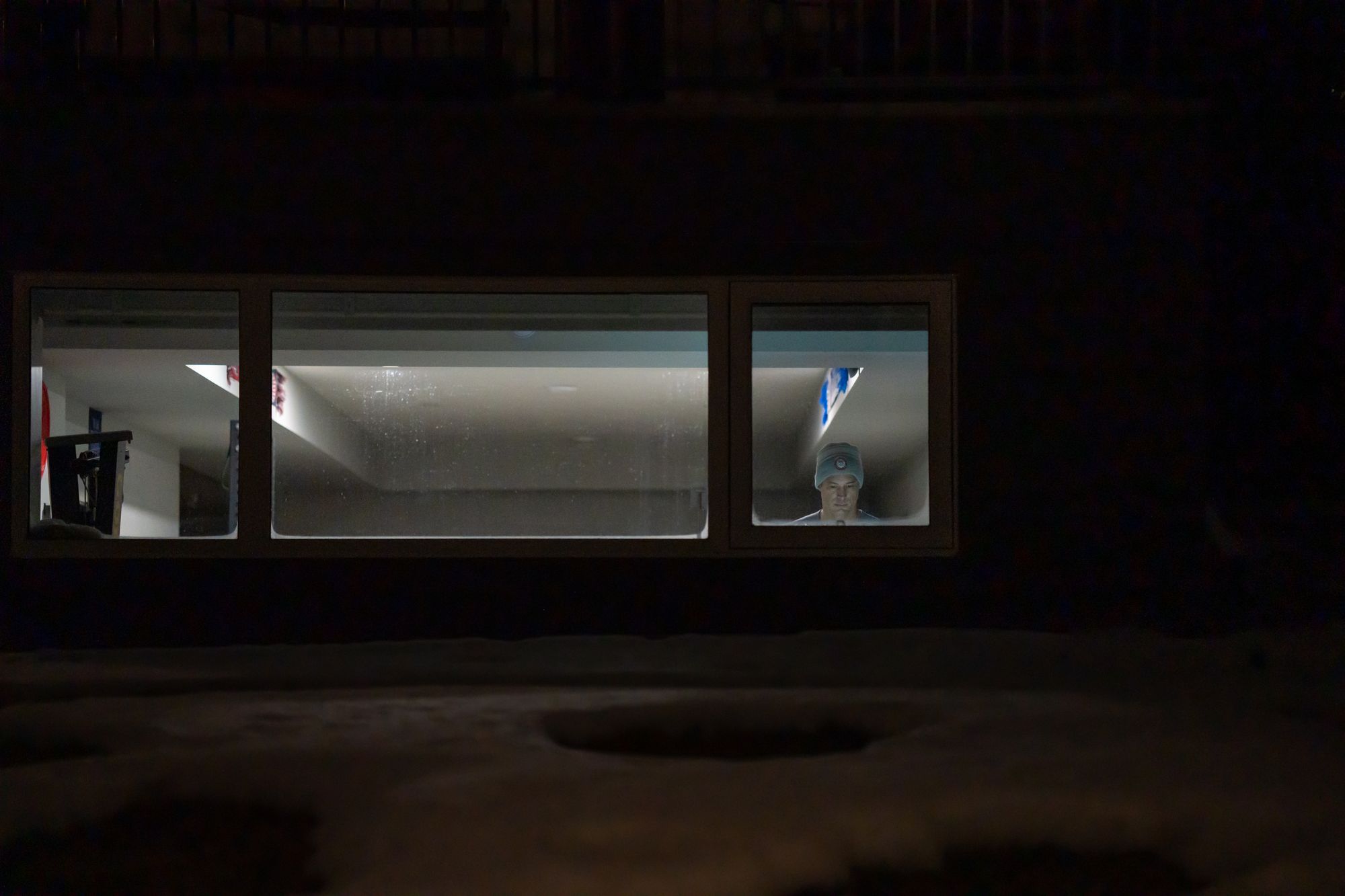
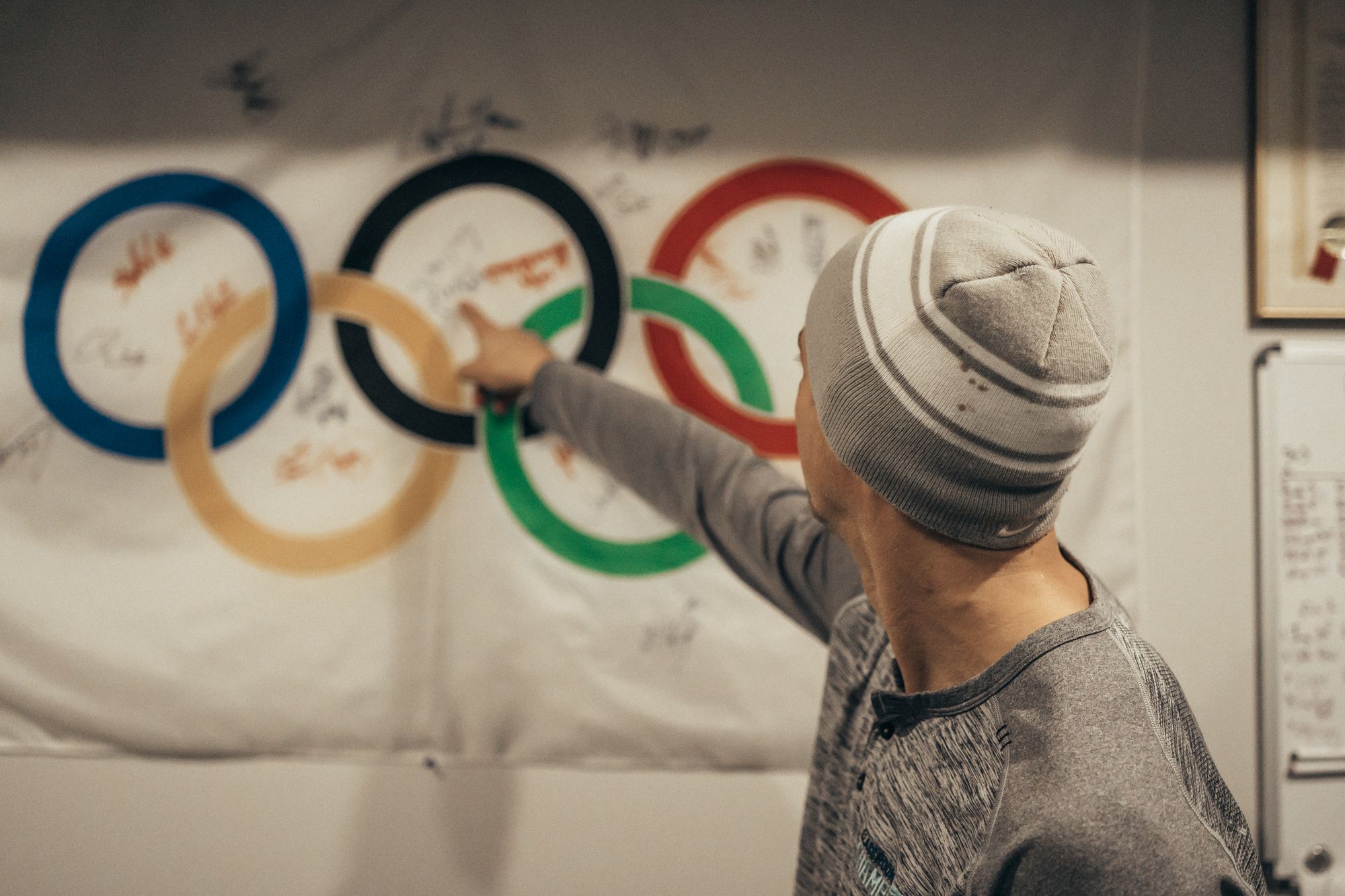
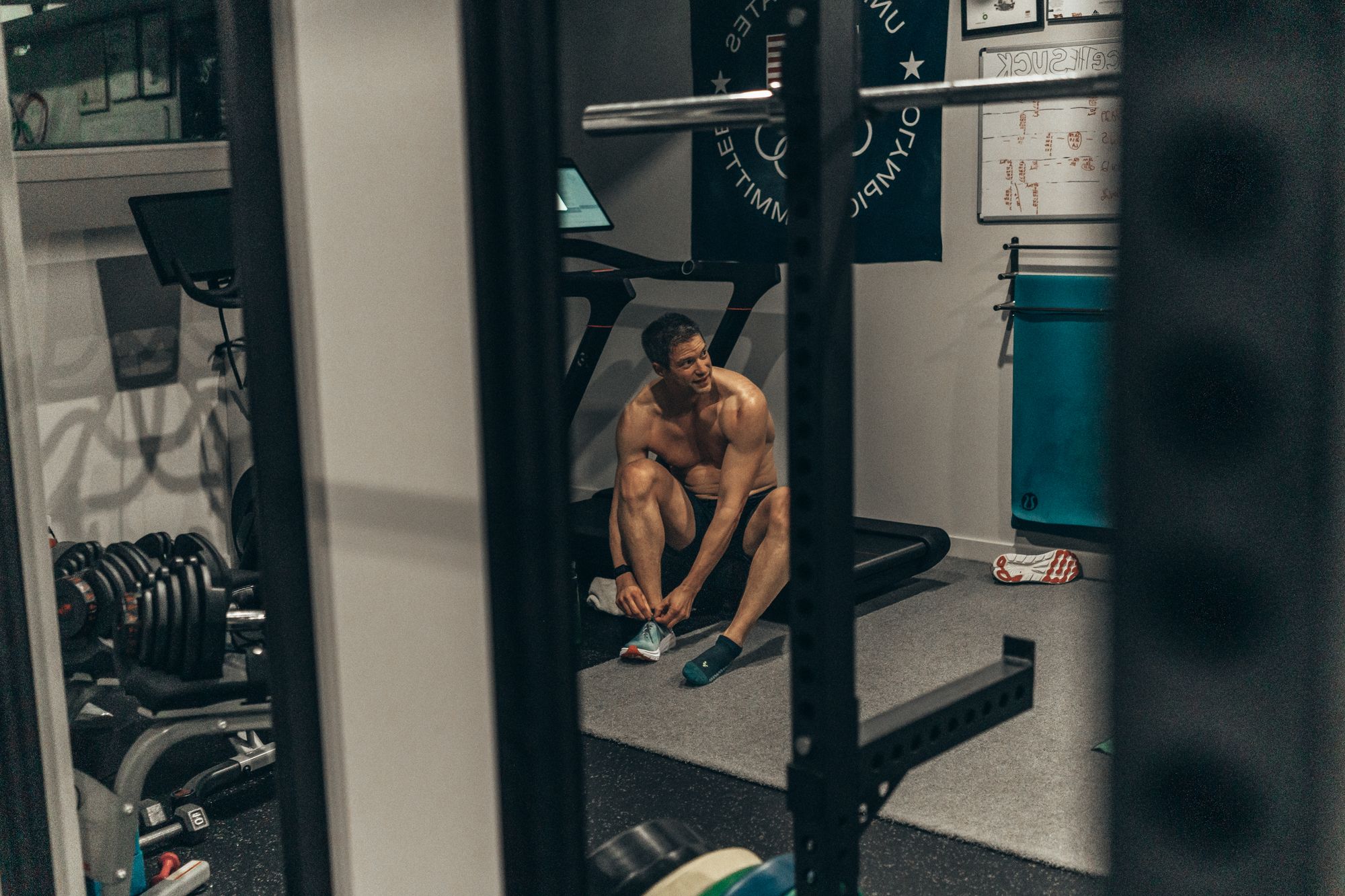
Mesler in his home gym. He starts at 5:30 a.m. before the household awakens. [Matthew Fults photos]
“I remember very vividly watching the team have their celebration when they came back after the first Super Bowl, and everybody who is a sports fan remembers the Buffalo Bills losing wide right to the New York Giants in the Super Bowl. Scott Norwood was the kicker. They did this thing at city hall and the whole team was up on this riser and it’s the dead of winter and tens of thousands of people start cheering 'Scott! Scott! Scott!'
"And here comes little Scott Norwood, this tiny kicker. And me being 12 years old, the impressionistic age where you’re just learning how the world works, getting to watch a city love the guy who lost them the game. It’s subtle, but also not very subtle, that you can fail at the largest level to the ‘nth’ degree and those around you still love you. Which then meant for the rest of my life failure wasn’t this thing where people wouldn’t love me anymore.”
Soccer and track and field dominated the emerging teenager’s schedule. Mesler was already showing promise as an athlete, but his parents never let him forget the values they wanted Steve and his sister Leigh to carry with them. He describes it as the “teacher mentality” where prioritizing education was ingrained at an early age. Where discipline in the classroom leads to discipline on the athletic fields. Where the parameters for becoming a successful adult are shaped and nurtured, so when it’s time to leave the nest, the path looks familiar and the navigation is second-hand.
It’s a little after 7 a.m. and the Mesler household is starting to radiate energy. Following his workout, Steve stretches and heads upstairs. Five-year-old Brett is at the island counter, massaging white icing onto cinnamon rolls. Eleven-month-old Axel is on Rhiannon’s hip as she scurries around the kitchen, preparing breakfast and lunch.
Steve grabs the youngest and effortlessly inserts himself into the family buzzsaw. He makes breakfast for himself — a protein shake and some oatmeal. He also makes coffee, preferring a blend of decaf and caffeinated beans. In the midst of this, he challenges Brett to a board game of Guess Who?
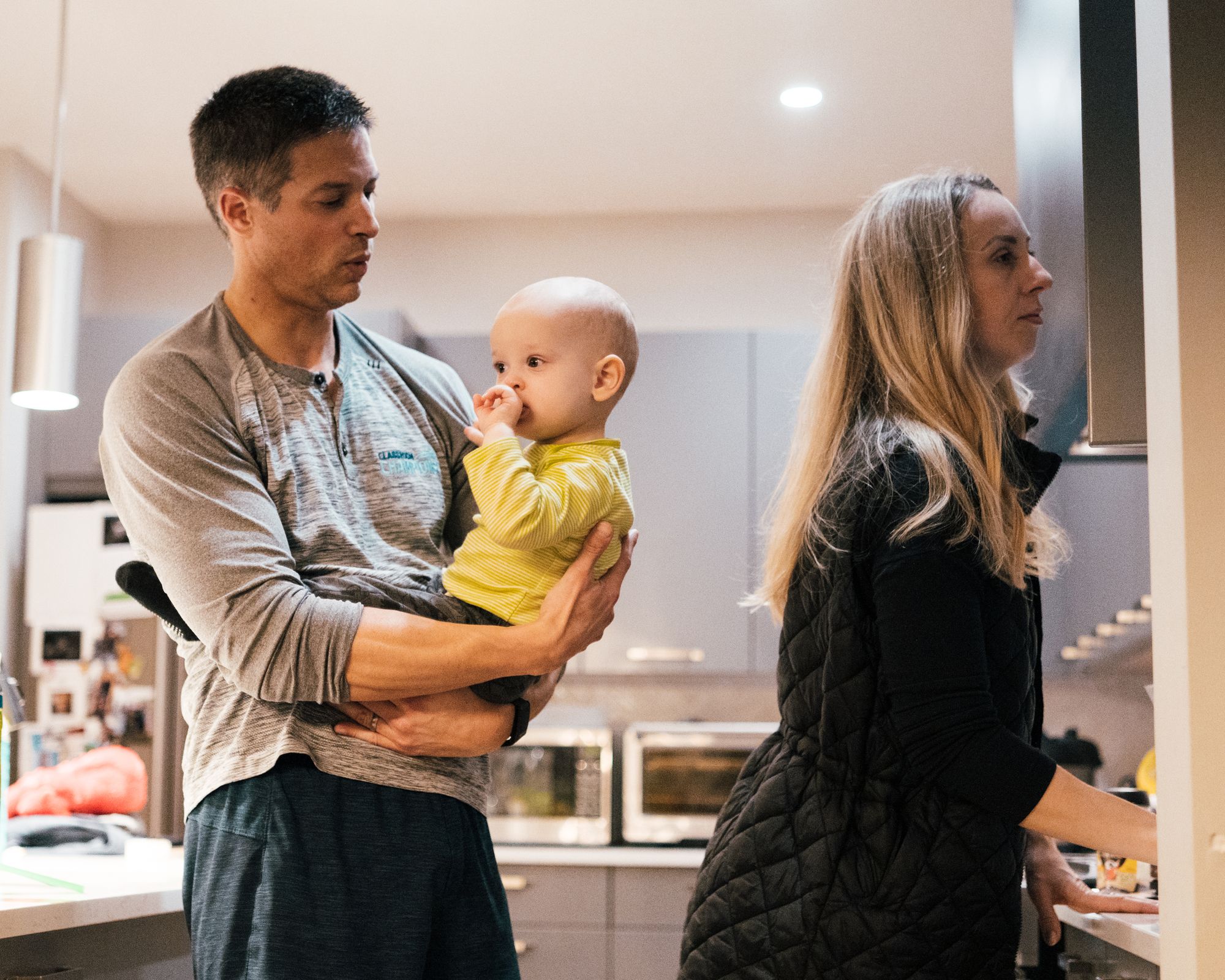


Family time at breakfast. Steve, wife Rhiannon, daughter Brett and son Axel. [Matthew Fults photos]
She accepts the challenge, and moves to the kitchen table, where Steve has put young Axel in a high chair while father and daughter prep the game.
It was obvious from his teenage years that Steve was built to compete. He was long, lean and strong. He could run. He could jump. He was, as he puts it, a coach’s dream. Obedient and eager. These traits are already bubbling to the surface in Brett, who recently finished first in a ski race.
“As I look back, I was the athlete every coach would have loved to have, and loved to have on their team. They could put me in track and field in any of the events. They could put me in 400 meters, 400 meter hurdle to any of the field events and I could win any of the city competitions so for me it was the kid in the candy store all the time.
“I was also very obedient with my coaches,” he says. “For me, working with my coaches and having good relationships with my coaches was super important. They saw the hope and promise in me. Jim Garnham and Pat Wyatt, I owe my athletic success to those two people. Those guys saw it in me. They saw what I could accomplish, and because of them I went on to win the national championship in high school, and then got my scholarship to Florida.”
Soaring after a high school national championship in pentathlon, the University of Florida offered a scholarship and a hopeful future for the promising graduate of City Honors School, which years later would rename the school’s strength training room for him.
“When you want to be successful in sports, you go to a place like UF. For me, I was terrible,” Mesler recalls. “I had all the hope in the world, and the coaches worked really hard. Jerry Clayton that recruited me … those coaches believed in me and I failed to deliver every single season. I was hurt every single season. It was hard. It was really hard. Every season would end in an injury of some sort.”
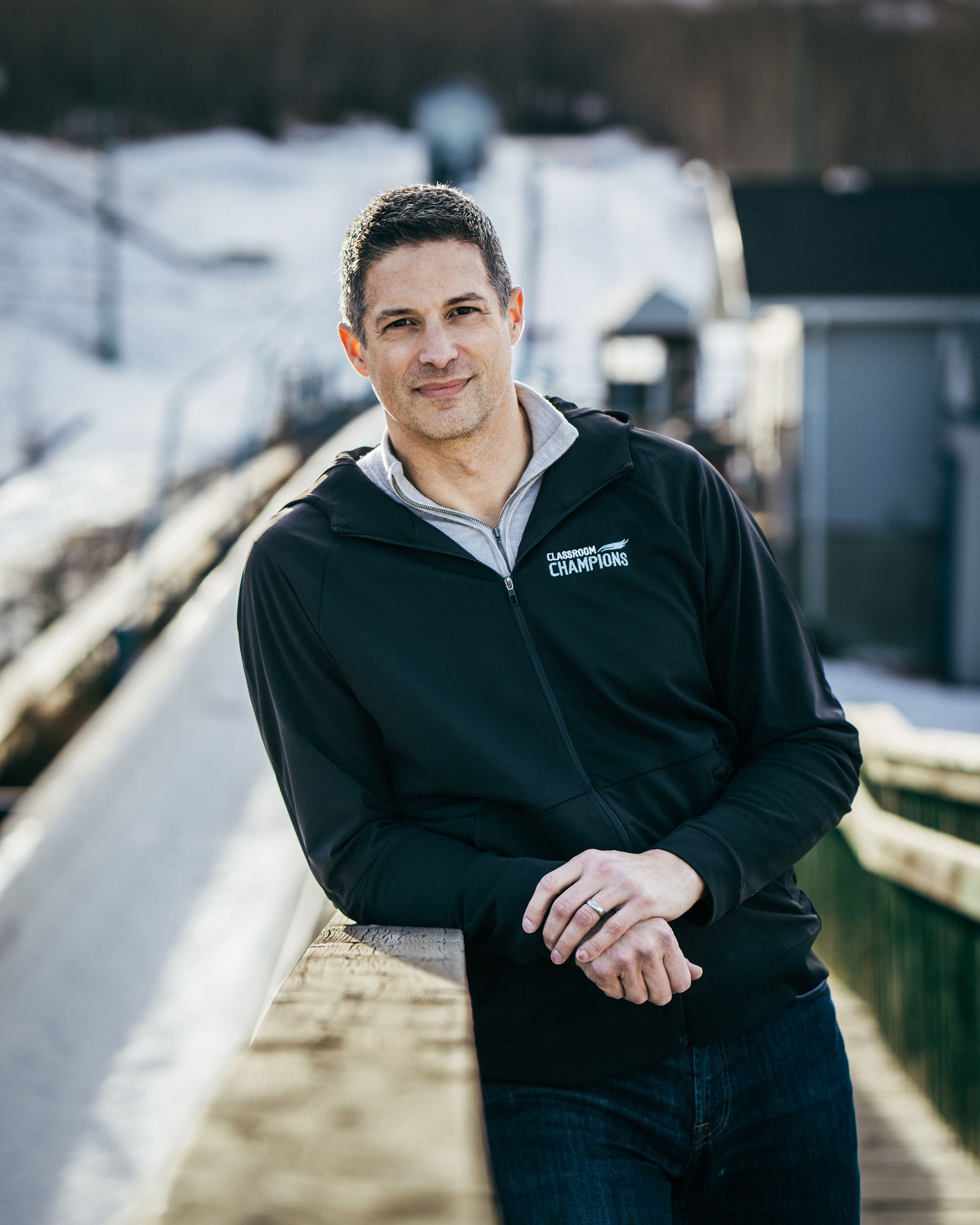
It’s probably worse in Mesler’s memory than reality. He was named All-SEC and All-SEC Academic. The Southeastern Conference is arguably the country’s best. But maybe that dominance in Buffalo, those city championships and all the medals and accolades, meant that his thirst for greatness couldn’t be quenched in Gainesville. He was the self-described King of Buffalo. But as the calendar pages turned in the humid swamp, as the doubts began to surface and the introspection heightened, one question haunted him.
Had he peaked?
“I was sitting on my couch in Gainesville, late August of 2000, I was two days out of Tommy John surgery and it was clear track and field was just not for me. I was not going to do it. I was not going to fulfill the destiny I thought I had,” Mesler says. “Every athlete goes through it. Every high performer goes through it. ‘Is it time for me to move on now? Is this it?’ I was in that moment — whether it was the painkillers they had me on — Jerry Clayton’s voice in the back of my head pops in and goes ‘Bobsled!’
Bobsled?
WTF.
But there’s a thread here involving his coach, Jerry Clayton. Clayton had once coached a guy named Rob Olesen, who ended up a bobsledder at the 1998 Olympics in Nagano, Japan. Yeah, it’s a loose thread. But Mesler pulled hard enough to write an email and, well, start a new chapter.
“I literally, one arm in my sling, got on my laptop and on Yahoo! found the U.S. Olympic Committee’s contact email address. I sent them an email and said ‘I’m this big, this strong, this fast, can I do this?’ I got an email back the next day from a guy named Greg Sand from USA Bobsled … and I felt like I had been saved. Because I didn’t want to think I’d peaked when I was 17 years old. I was 22 at the time. I didn’t want to think I had peaked at seventeen, in high school. I had so many more aspirations. I started training right away. That’s how I got into bobsled. It was a Dear John, Hail Mary email to try to save my sports career.”
I didn’t want to think I had peaked at seventeen, in high school. I had so many more aspirations.
In the fall of 2000, Mesler was working as a volunteer strength coach at the University of Florida. One of his pupils was future women’s soccer legend Abby Wambach, who would win an Olympic gold medal in 2004. Her future was in front of her. Mesler was convinced his was a dead end.
But he kept the flame burning. He wasn’t going to be Dan O’Brien, famously of the "Dan vs. Dave” commercials in the 1990s. O’Brien didn’t make the ’92 team, but won gold in Atlanta in 1996. The Mesler family was in full attendance, watching O’Brien’s redemption. Steve thought he saw his future as an Olympic decathlete.
But alas.
He accepted the invitation to join USA Bobsled. They are always looking for the best athletes. Mesler was still trying to prove he was’t done. His dream as an Olympic track and field athlete was dead. Could he crossover and find his personal heaven in the Winter Games?
By May of 2001 he was training with Team USA’s Brian Shimer's group. That summer he was in the athlete dorms in Lake Placid.
It was all happening so fast. By the time he settled into his dorm room in Lake Placid, it would be just seven months before the Salt Lake City Olympics.
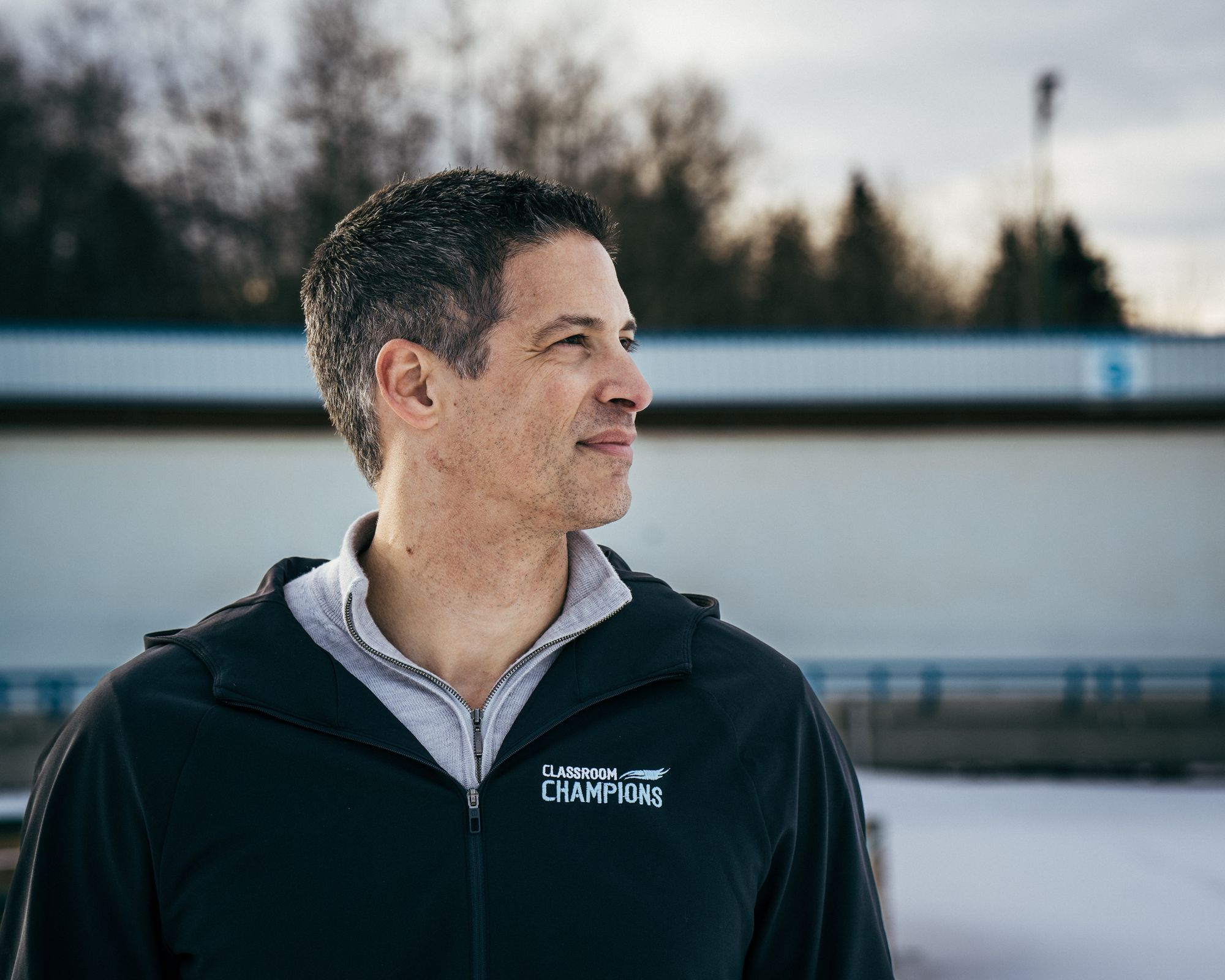
“Some people that come from football didn't have the Olympic dream so it's harder. Like their dream of a football — there's other things connected to that football dream. When you're a track kid you don't have any other things that are connected other than the Five Rings so I think for me that was like an advantage. Ultimately it made me just as hungry as I could have possibly been and I adapted to the lifestyle that it was and again I loved it.”
His wife of seven years, Rhiannon, recognizes the traits in him today that made her husband a successful athlete in a lifetime she didn’t share with him. They didn’t meet until 2010, after his retirement.
“I think excellence makes him tick,” Rhiannon Mesler says. “Striving for excellence in all aspects of his life, whether that’s doing good, being a father, being a partner, being a friend, he’s defined by striving for excellence.”
Pavle Jovanovic is a central character in Steve’s story. Close friend, training partner, fellow homeowner in Calgary. He is the reason Mesler was added to the 2002 Olympic team. But not for the reasons you’d expect.
Everyone was expecting big things for Team USA leading into 2002. Getting ready was the focus. Eat. Train. Sleep. With the Olympics on home soil in Salt Lake City, the Americans were eager to erase decades of bobsled disappointment. They had two of the leading drivers on the tour in Todd Hays and Brian Shimer. They had elite push athletes. They could train more than anyone on the home track. It was all adding up to a medal haul.
Until Jovanovic tested positive for a tainted supplement. He was roommates with Hays and one of the best push athletes on the planet. Strangely, this is where Mesler’s Olympic dream would meet the intersection of reality.
“So I was sitting in the USOC’s hotel room Thursday night before the opening ceremonies in Salt Lake City, I wasn’t in the village, I wasn’t on the Olympic team yet. Pavle was going through his appeals process. So here I am, sitting in this hotel room, with this cell phone on me that they gave me, and one of two things is going to happen: Either Pavle’s appeal was going to go through, and Pavle was going to be back on the Olympic team and he should be on the Olympic team because he was the best push athlete in the world and I won’t be going to the Olympics and I won’t fulfill the lifelong dream I had,” Mesler recalls.
“Or Pavle is not going to have his appeal go through and at that moment have my dream come true of going to the Olympics. It was a very surreal thing at 23 years old and you're also talking five months after 9/11. I remember that it was dark outside and I can remember sitting in the lobby and I was like hyper nervous of course and getting a phone call and someone saying ‘Congratulations, you’re an Olympian.’ And it was the most mixed emotion. I recognized what that meant for Pavle, who was a new friend at that point. I was only in the sport for a year. I also realized I was going to be walking to the Olympic Village as the guy who just replaced Pavle, who’s the best push athlete in the world which then really, really undercut America’s chances of medaling at the home Olympics.”
If that wasn’t awkward enough, Mesler would be rooming with Hays, who was originally slotted with Jovanovic. Mesler and Hays had a “checkered past” and the Buffalo native wasn’t sure what to expect from the big Texan. He knew Hays, aside from Jovanovic, would be the most affected by the suspension. USA1 was a contender.
“I give Todd credit to this day that he turns to me and he goes ‘You deserve to be here.'
"You can't help what happened with Pavle. You deserve to be here, you should know that and you should enjoy that and he turned my Games around.”
With Mesler added to the team, alternate Billy Schuffenhauer was moved onto USA1 in four-man. The Americans would end the curse, racing to silver for Hays’ sled and bronze for Shimer’s. The two alternates — Mesler and future USA Bosbled CEO Darrin Steele —would not take home medals, but it sparked a fire that would burn for another eight years.
“I mean two-and-a-half weeks earlier I was happy just to make the Olympic team and just like any good, successful human being in the moment, you reach the goal that you had set for a long time, the moment you reach that, you're already on to the next goal and in that moment watching those eight guys celebrate their medals I was like, ‘I want one of those.’”
In 2003 Mesler moved to Calgary to train in a more affordable environment. Stipends didn't cover much, so the further he could stretch his money, the better. In Calgary he was able to build on his early foundation and experience at the 2002 Olympics.
Four years later in Torino, Italy, Mesler was on USA1 with Hays driving, Jovanovic pushing along with Mesler’s first Calgary roommate Brock Kreitzburg on the brakes. The expectations were that the gold medal drought was over. USA1 was as good as anyone.
“And we got 7th place and it was the worst finish we'd had in four years at that race and it was devastating.”
He pauses and shakes his head.
“It was devastating.”
The training cycle known as the Olympic quad is a curious thing. For roughly three years and 360 days, the athlete lives in relative obscurity. They train out of sight. They compete around the globe in events that are rarely televised in the U.S. They gain ground, have setbacks, suffer injuries. They win medals. They lose races they can’t finish. Technology fails. The mind bends.
Within this cycle, potential usually finds results. Results lead to expectations. Expectations either crush an athlete, or feed them. The cycle eats you and spits you out.
Vancouver, Canada was the host of the 2010 Olympics. For the second time in three Olympics (an eight-year span), North American athletes would have the advantage of training and competing at Olympic venues. Don’t underestimate this.
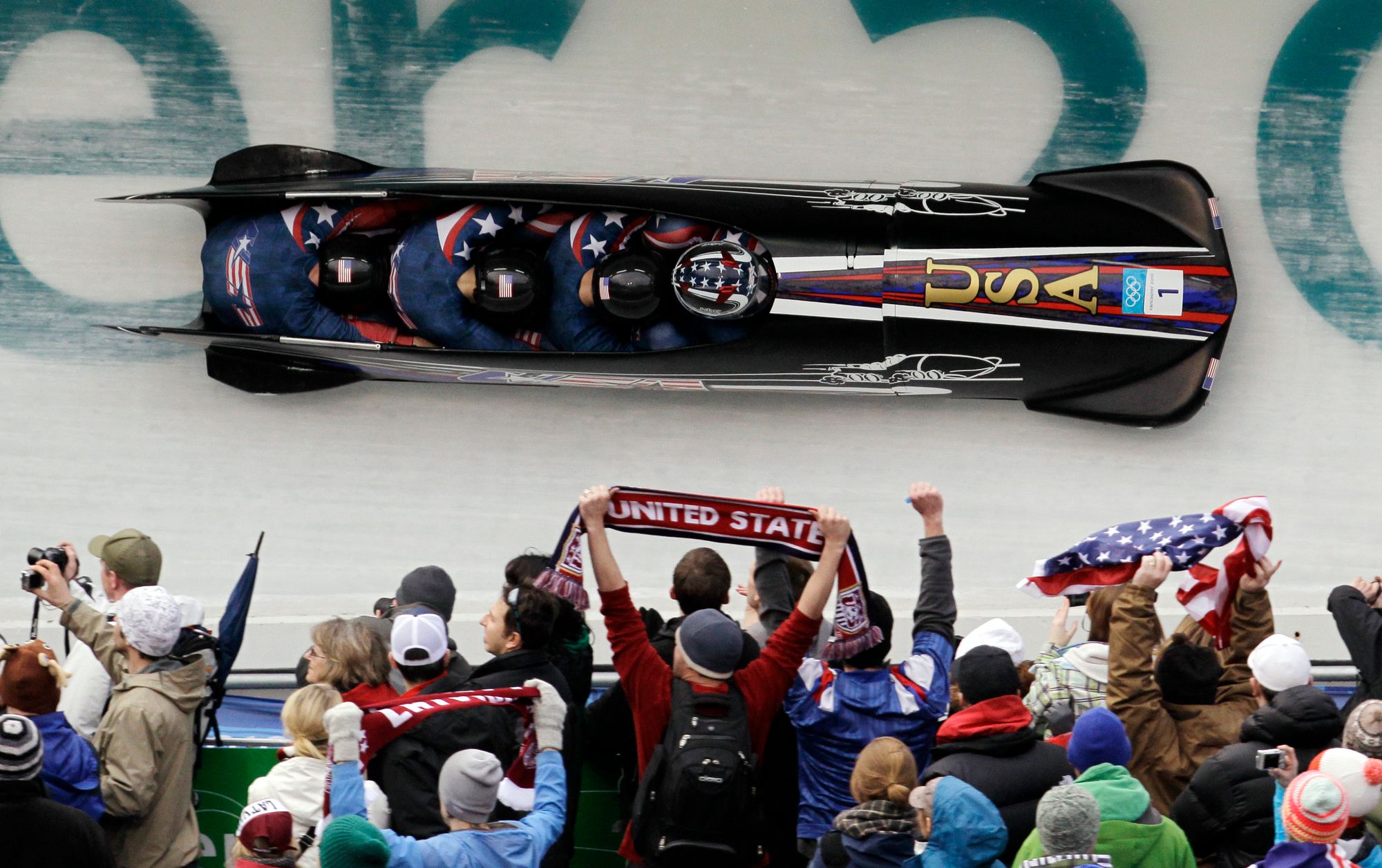
Meanwhile, Todd Hays had retired, and the new USA1 driver was upstart Steve Holcomb. Holcomb had hovered near the Olympics podium in Torino, finishing sixth in four-man. Entering a new Olympic quad, Holcomb finished the 2006-2007 season with the combined two-man and four-man World Cup title. He was establishing himself as the driver to beat, and by the time the 2009 World Championships came around, he had settled on his team.
“I got into Holcy’s sled and you could tell that we are going to do something special at that point and we had a couple changes in the team,” Mesler recalls. “Pavle got moved off and Brock got moved off.”
In came Justin Olsen and Curt Tomasevicz. Finally, it seemed, the chemistry was ready to explode. Lake Placid hosted Worlds that year, and the team decided to stay close and train. They put all their chips on winning Worlds, forgoing two weeks of earnings on the international circuit, but it paid off with a dominant World Championships performance.
“We did it. We won and we had an Olympic year going in as the favorites and that would be the first time the Americans were in that position for a long time and it was so much fun.”
Smiling at the memory, he repeated himself, his voice tailing off a bit. He does this with his storytelling. Losing himself in the memory.
“It was so much fun.”
This is the point in the story where you’d like some drama to build. But by the time Feb. 26 and 27 surfaced on the calendar, the 2010 Olympics was almost a formality for four-man bobsled. Holcomb and crew were dominant that season, and on that track. Highly technical and fast, the track wasn’t suited for anyone but the steeliest of drivers. Although Holcomb was fighting through personal issues, he found his nirvana in Whistler, B.C.
“Everything worked that season. We pushed great, the sleds were great, Holcy was great. We had some interpersonal conflict issues. Holcomb had some challenges, some issues — he had some demons that he was really dealing with that year — but we managed them. Curt and I spent a lot of the year managing Holcomb's issues to help him be the best he could be and we showed up in Whistler and we crushed everybody.”
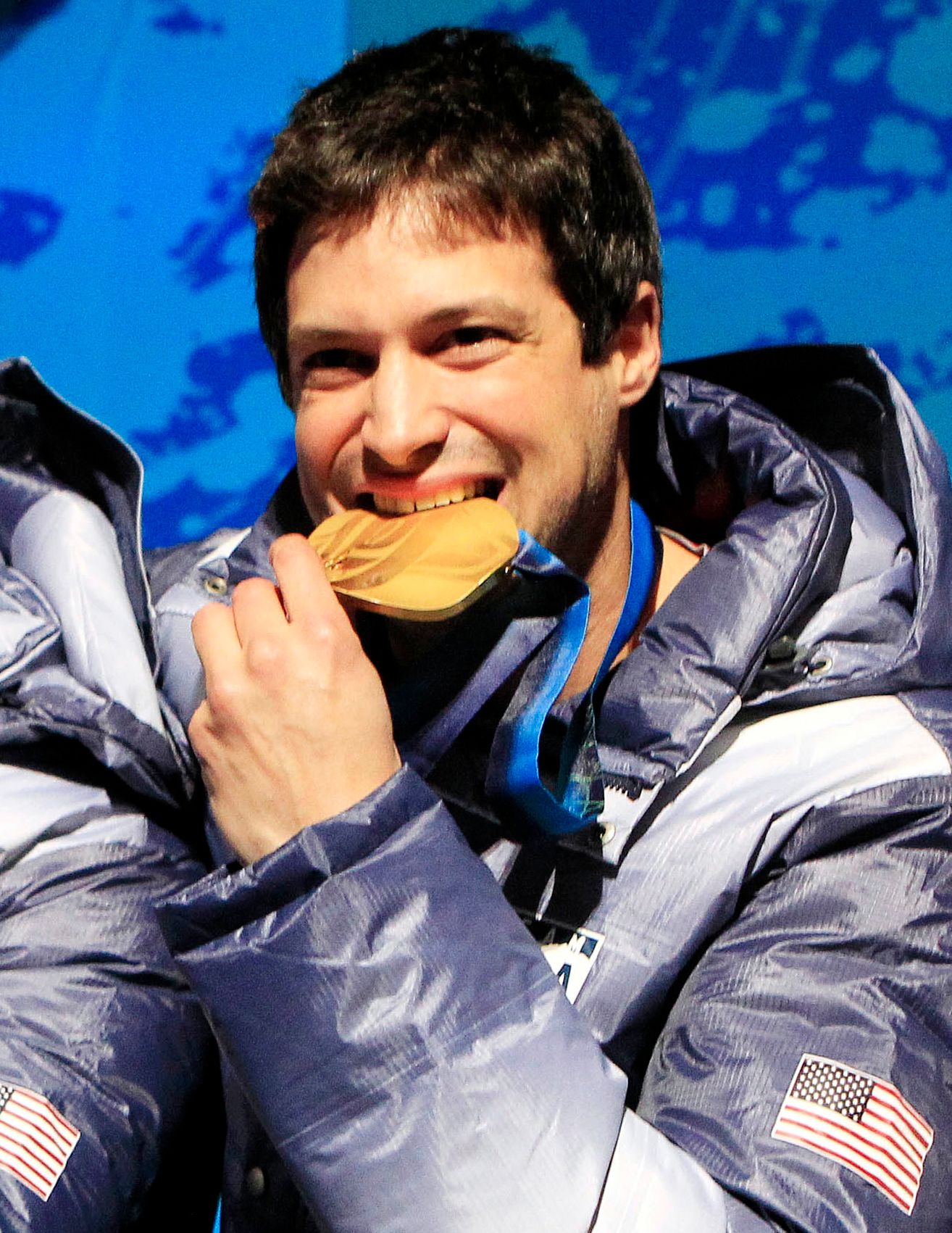
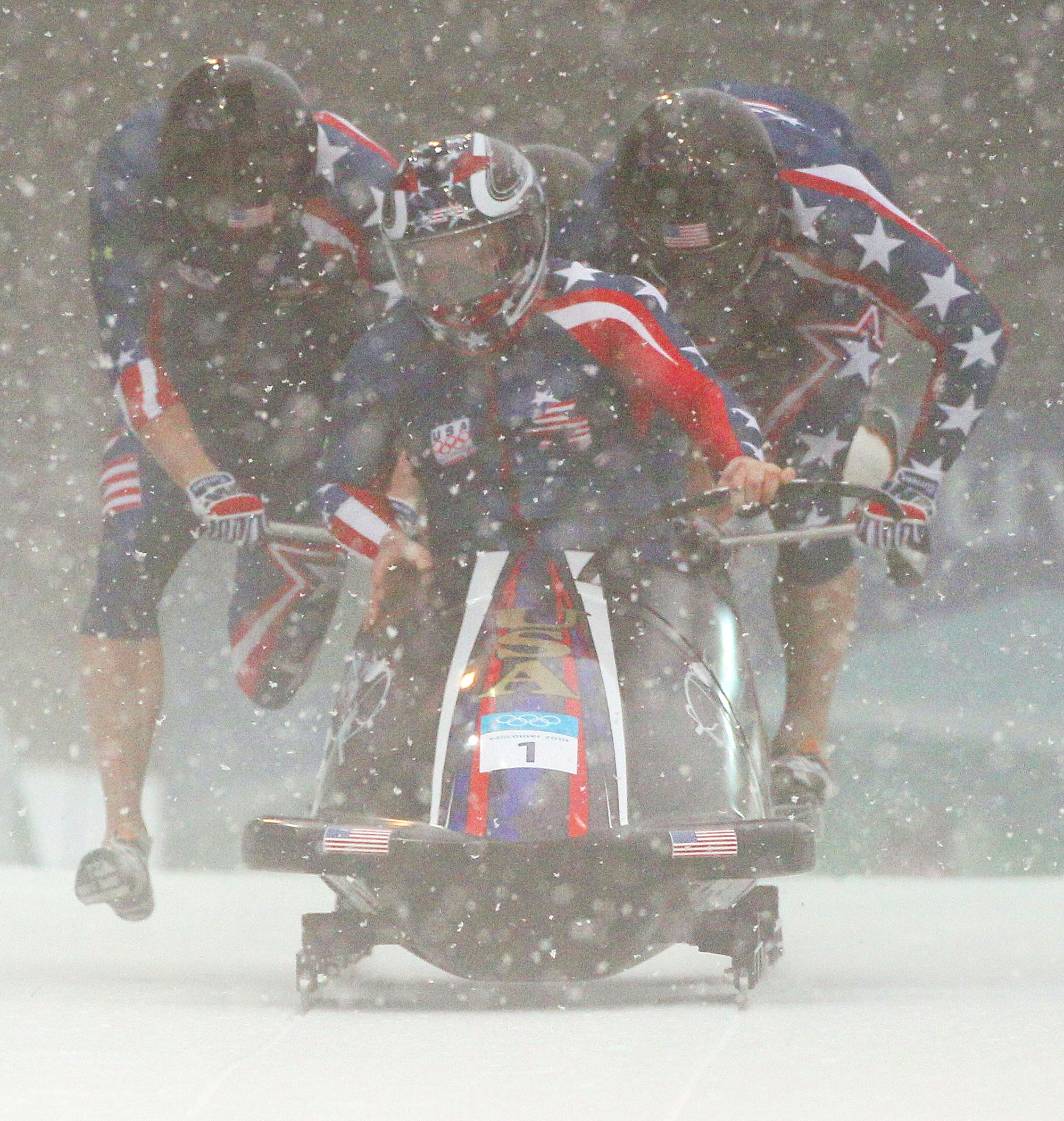
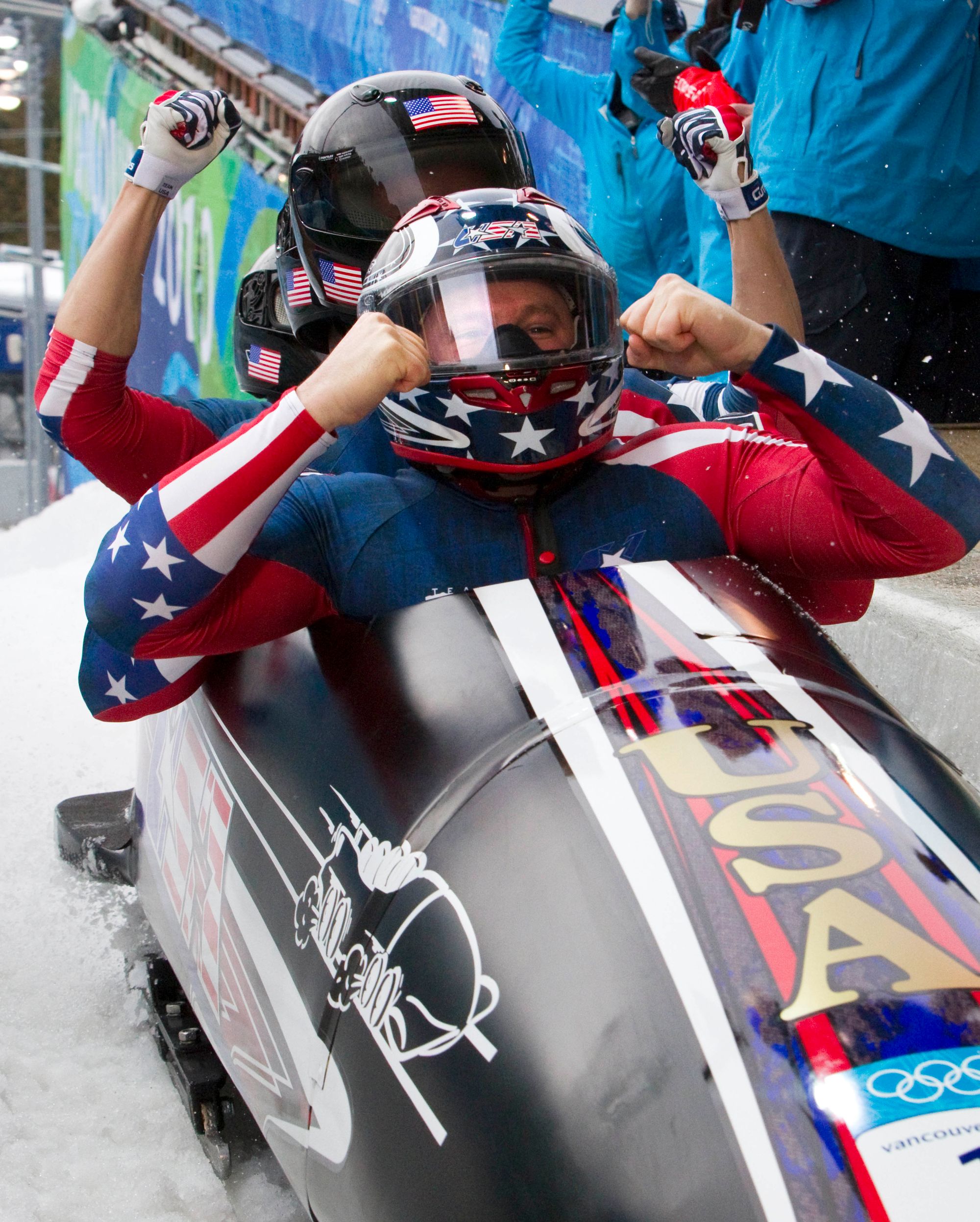
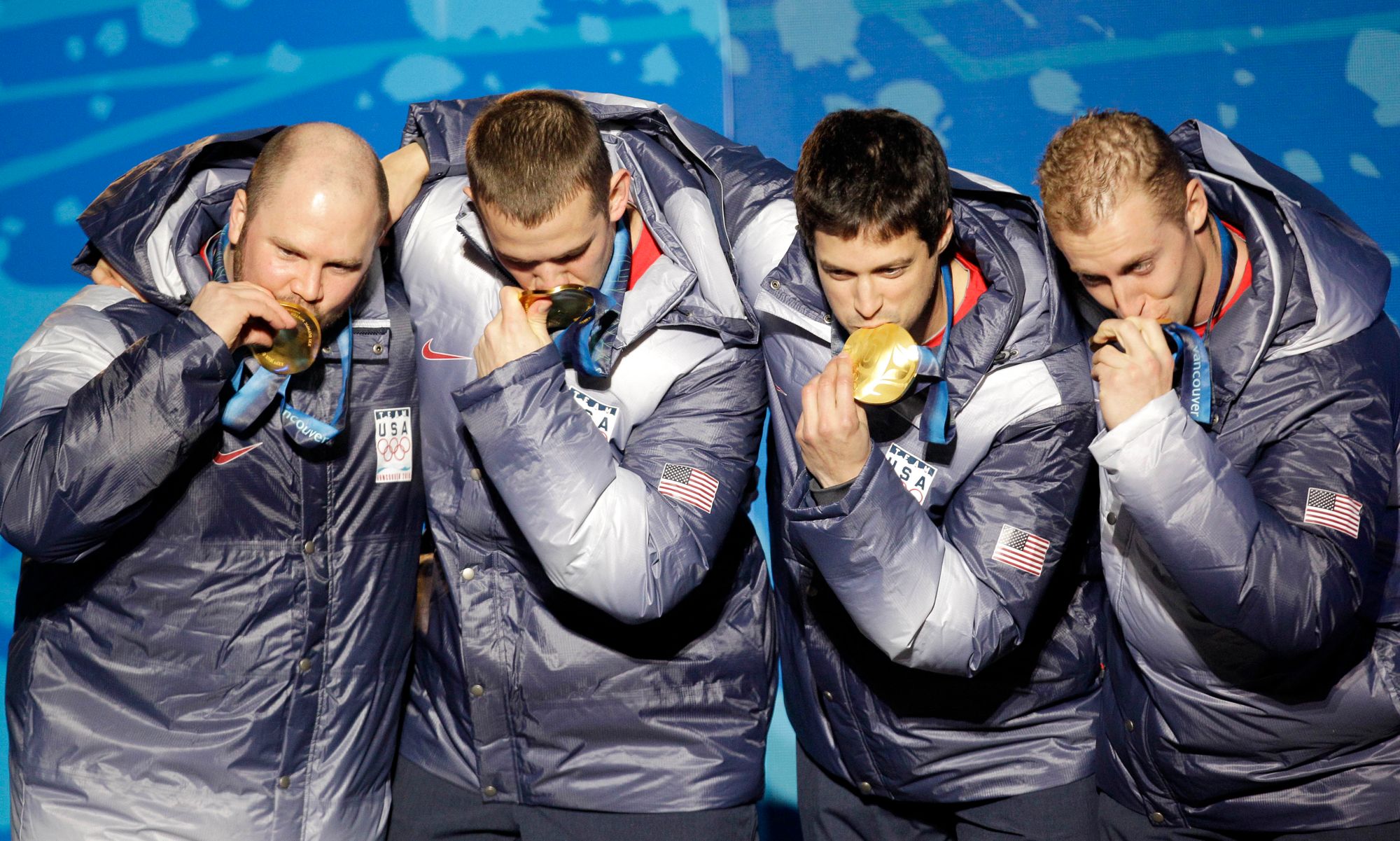
A lifetime in the making, the gold medal dreams came true for Holcomb, Olsen, Mesler and Tomasevicz. [AP photos]
“I remember standing on the podium in Lake Placid at World Championships in 2009 and I turn to Justin Olsen — it's his first year on USA1 — and you win a World Championship for the first time in 50 years. I turned to Olsen right before we get called to go up and stand up on the top of the podium and I go ‘It’s not this easy’ — like I didn't want to let him celebrate at that point. Which in retrospect is terrible,” Mesler says, laughing a bit.
Back in Whistler, shades of that memory found light again.
“We wound up winning by the biggest margin of any four-man bobsled in multiple Olympics at that point and we're standing behind the podium at the Olympics in Whistler and the Canadians get the bronze and the Germans silver and I turn to Justin and ago, ‘Meh, maybe it is this easy.’
The present-day Mesler household is still swirling with energy. Steve has showered and begins his day as president and CEO of Classroom Champions, an organization he founded more than a decade ago with his sister Leigh and the help of his then new-girlfriend, now-wife Rhiannon.
Classroom Champions in its current iteration provides an award-winning Social and Emotional Learning (SEL) curriculum to elementary schools in the U.S. and Canada. Athlete mentors — Olympians, NCAA standouts, some professional athletes — are assigned to a classroom, and make weekly appearances via video conference or in person. They work through eight monthly themes, distilled into lesson plans that include subjects like dealing with anxiety, problem-solving and goal setting. The idea is to take “the athlete mindset” and apply that to learning.
In his home office, which is decorated like you’d expect an Olympian’s man cave to be, he stands at his desk, his feet snuggled in Crocs, and sips coffee from a lidded, insulated mug while meeting with staff via Zoom. One monitor has bright pink sticky notes with reminders to himself: Slow down. Use less words. Do not be defensive.
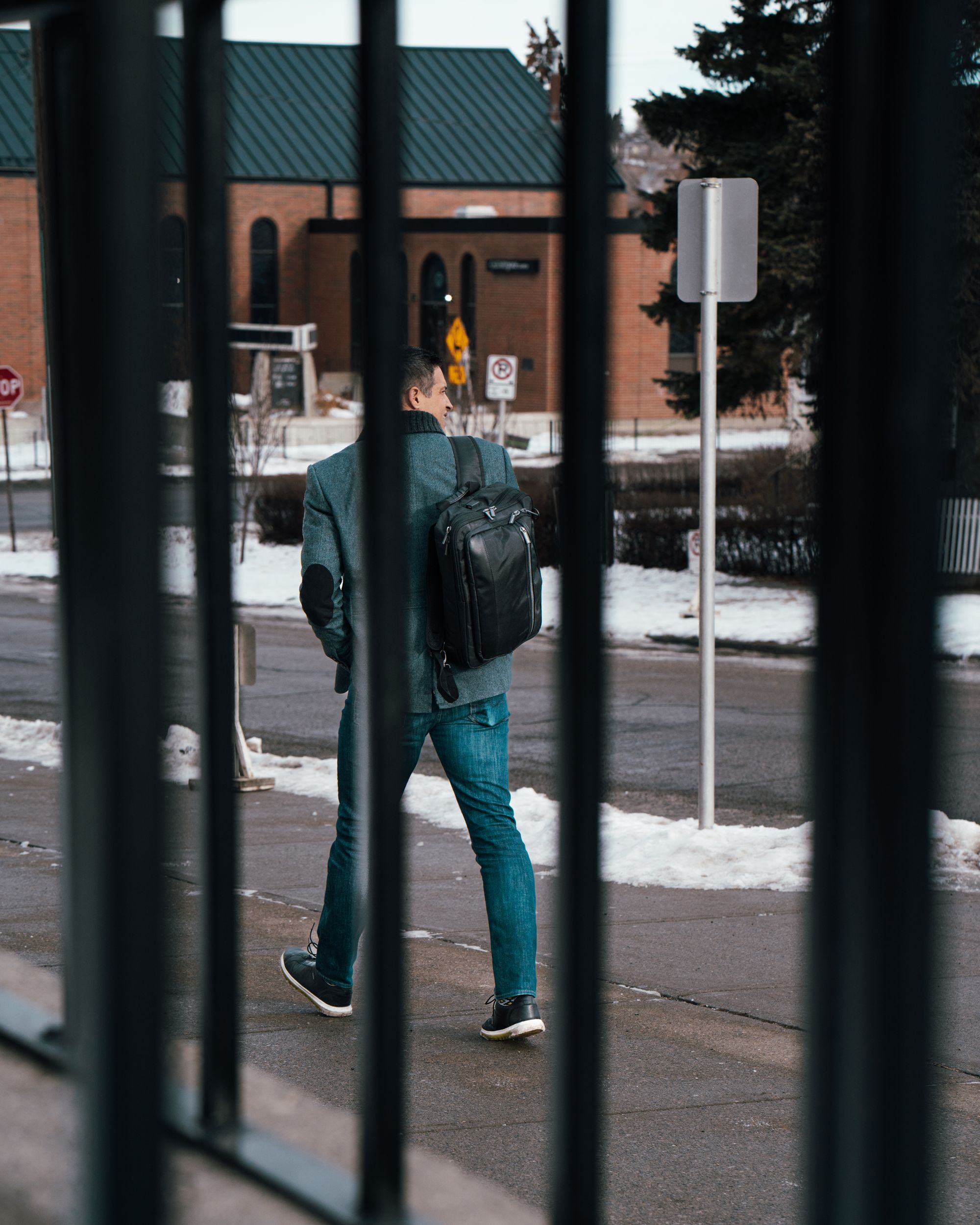
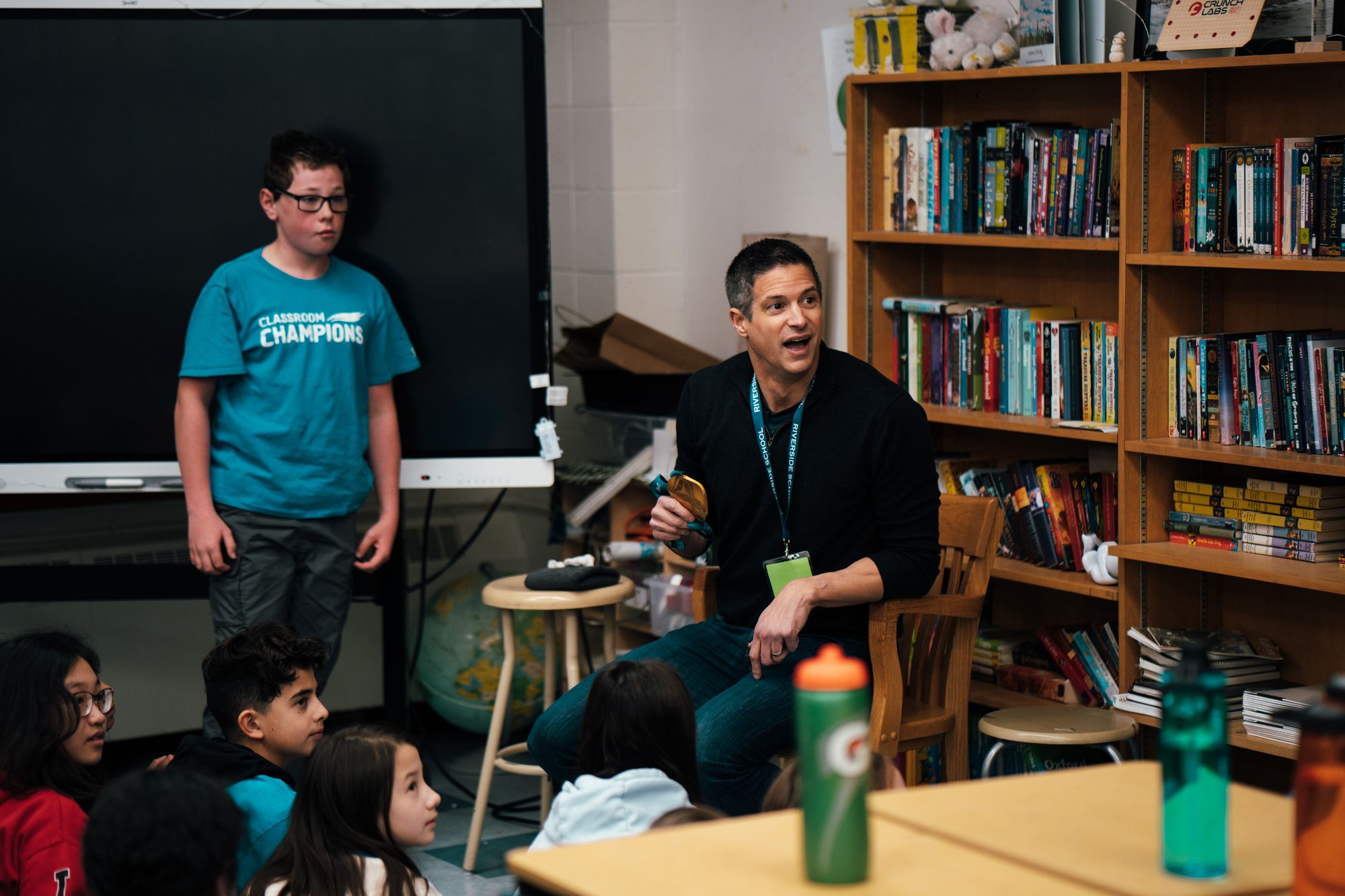
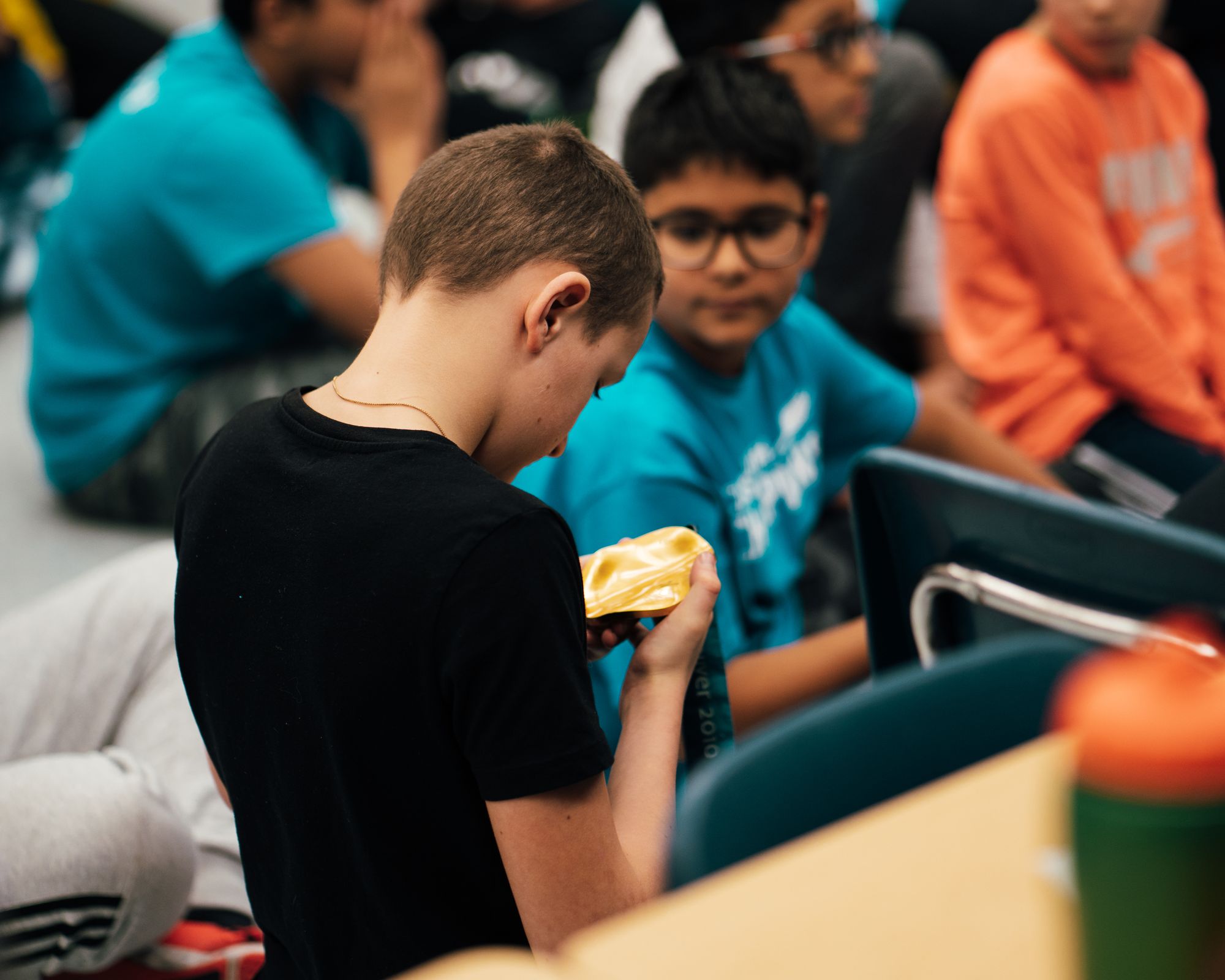
As part of his personal outreach, Mesler visits a Classroom Champions school in Calgary. [Matthew Fults photos]
Steve is very dynamic as a leader of this young company. He juggles growth, expansion, fund-raising and meetings upon meetings. It’s no different than any other president or CEO. But his energy still says “athlete” and, yes, he has a presence that makes people take notice. In December, he just came off an eight-year term on the USOPC board of directors. He's been juggling a lot of acts.
Grace Dafoe is a current Canadian national team athlete in skeleton. She also works for Classroom Champions. In many ways, she’s able to see the vision from both sides. Dafoe’s evaluation of Mesler’s interpersonal skills — a specific memory of meeting him for the first time — paints a picture.
“I’m quite introverted and this boisterous person comes into the room and they’re like ‘Hey, this is Steve’ and Steve is just like full of energy, he’s just always so outgoing, he can work a room, make sure everyone in the room feels like they are seen and he makes a point to make eye contact with them,” Dafoe says.
Classroom Champions evolved from Steve visiting schools as an athlete. It’s a pretty routine part of the Olympic media and community outreach cycle. Athletes bring their Olympic or World Cup medals to share with the kids, give a speech about achieving and pose for photos and sign autographs. In 2010 it was an embryo. With his sister, they started cultivating and developing a concept.
And six months after winning gold, he goes on a date. This Canadian girl, who remembers the first thing she thought — “He’s hot!” —ends up schooling him in U.S. constitutional history. She’s brainy, attractive and not intimidated by an ex-jock with an Olympic medal.
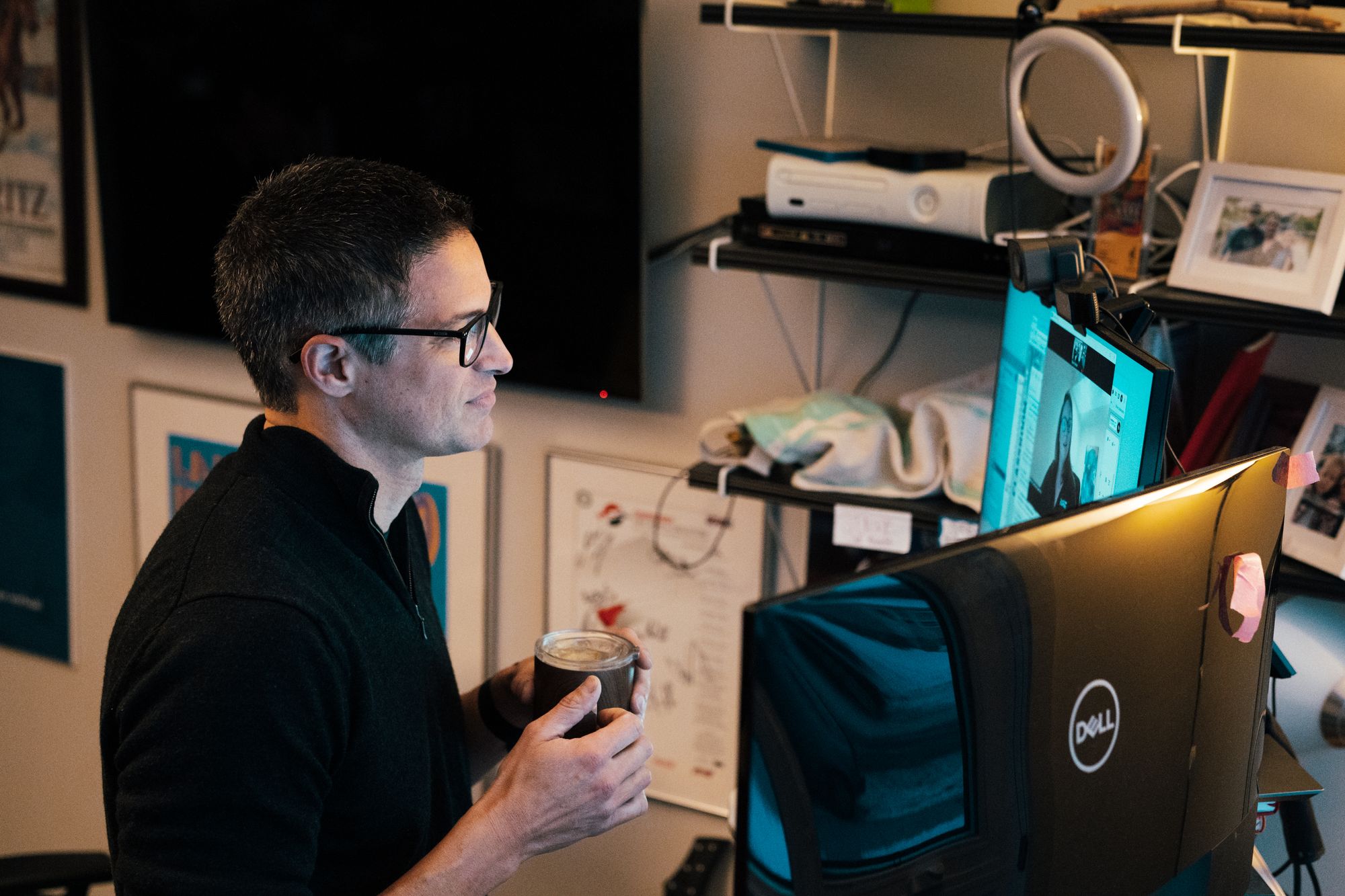
Mesler meets with his staff via video conference. [Matthew Fults photo]
A perfect foil, perhaps. But also a perfect match, because on that first date they found their life partner.
“In his last Olympic year he had taken on some classrooms himself. It didn’t have a name, it didn’t have an intention except to bring the Olympic ideals and the athlete mindset to kids,” Rhiannon Mesler says. “He loved working with kids, he was intending to be a teacher, so he just did it himself. After that was over, he and his sister were like ‘You know, I think there might be something to this.’ Moving into 2011, we incorporated the charity in Canada and started moving forward, and we did the same thing in the United States.”
Through the first couple of years, Steve continued working his day job as a consultant. Nights and weekends were spent ideating, building and planning. While the business took shape, Rhiannon and Steve’s relationship bloomed.
“Classroom Champions was a labor of love for us,” Rhiannon says. “It allowed us to get to know each other. We got to deal with challenges. Steve likes to make the joke that the first couple of annual reports we did together, if we could survive that we could survive anything. It was the way we had become best friends, working through everything.”
Within a couple of years, the concept was looking like it could fly.
“I think there’s been a few inflection points. I think inflection point one was Steve deciding he was going to do this as his full-time job,” Rhiannon says. “I think that’s where we sort of passed the viability test and were like ‘Yeah, we’re really onto something here.’ I think raising the first million dollars was another one.
“Steve also has the humility to recognize he might not be the best one to run this organization, and that he can bring in other people, and figure out what role he can be best in to make it have the best impact possible for as many kids as possible.”
Gilmore Junio and Brooklyn McDougall are both Canadian national team speed skaters. They are also Classroom Champions mentors. They are young enough to understand how such a program would have benefited them as young students. They are old enough to be relatable stars to kids in classrooms everywhere.
“When I looked at the curriculum and thinking back to when I was a kid, I think that learning how to control and learning how to embrace my emotions in different ways and understanding that all emotions are normal and learning how to deal with them and work through them and having that support, I think knowing what I know now that would be really helpful a kid,” McDougall says.
Junio — and skeleton athlete Dafoe — say the program works both ways. They help the kids, and sometimes the kids help them.
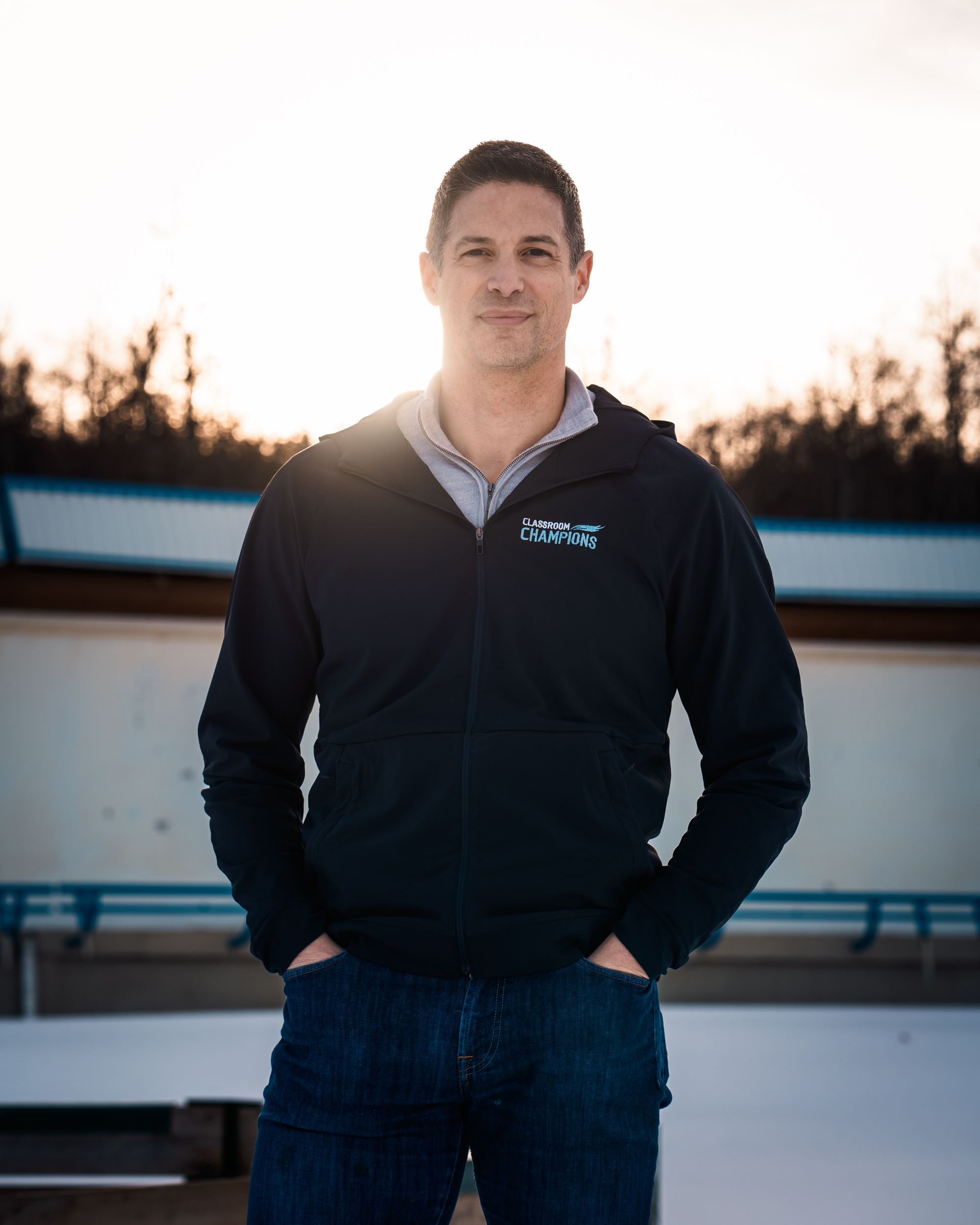
“The best part of (a recent) classroom visit was me leaving and them chanting ‘Go Grace Go!’ To hear fifty elementary kids chanting ‘Go Grace Go!’ was pretty cool,” Dafoe says. “The athlete journey can be kind of isolating sometimes, and to have this direct line to people who are cheering you on that aren’t your parents, your family and friends is really cool. You know, when I’ve failed or not met my goal at a race, they are still so proud of me and that keeps you going.”
Junio adds, “Those moments when you actually feel like you’re making an impact, you kind of take it for granted at times. I think back to one moment in particular, I was doing a live chat with a classroom and I was all the way in Kazakstan. I was tired, it was 2 a.m., I just wanted to go to bed, and I just started talking to this class — I think it was about goal setting that day — and all the kids started coming up and telling me their goals and being very specific about how they were going to achieve it, when they were going to achieve it by, whether it was something mundane like, ‘I want to be a good son to my parents by helping put away groceries’ or getting a good letter grade in one of their classes, I was like ‘Holy smokes this is what keeps me awake, this is why I do it, getting these kids excited.’ I left that conversation at 2:30 a.m. thinking ‘this is totally worth it.’”
For all the medals, all the sacrifice, all the sleepless nights and restless days. For the successes and for the failures, there is a price to pay.
Always.
The cost, however, is unique to each athlete. It becomes part of their athletic DNA. At one end, there’s the high school hero who becomes the weekend warrior with the bad knees. The other end of that spectrum is the worst thing you can think of: Chronic Traumatic Encephalopathy (CTE). It’s a degenerative brain disease found in athletes and military personnel who are subjected to repeated head injuries and brain trauma.
And then there are the things in the middle. They can be equally scary.
Things like depression. A subject Mesler is all too familiar with.
“The head trauma in bobsled is like nothing I would have understood walking into it,” Mesler says. “You knew when you got your bell rung, whether it was a concussion — often when you go down the track your head is down as a push athlete and it will slap against the side of the sled. These are stiff, fiberglass, carbon fiber things. You’re wearing a motorcycle helmet,” Mesler says, adding that your “head is doing this” as he slaps his hands together. “You see flashes of light. It was normal. You didn’t think about it. In your 20s you don’t think about those things.”
Early in his career he was a driver testing the timing at the 2003 World Championships in Lake Placid. The sled crashed near the bottom of the track. Mesler was pulled from the wreckage, was evaluated and seemed fine. He was near the finish dock, where all the sleds are loaded into trucks to get back up the hill. He turned to his coaches and asked, “Hey, what happened?”
They told him about the crash, and he says “Okay.”
Then, again, he asks “Hey, what happened?”
The coaches tell him the same story. He says “Okay.”
And then asks a third time, “Hey, what happened?”
He was sent to nearby Saranac Lake for a CT scan.
Mesler was able to recall breakfast that morning and the CT scan, but nothing else.
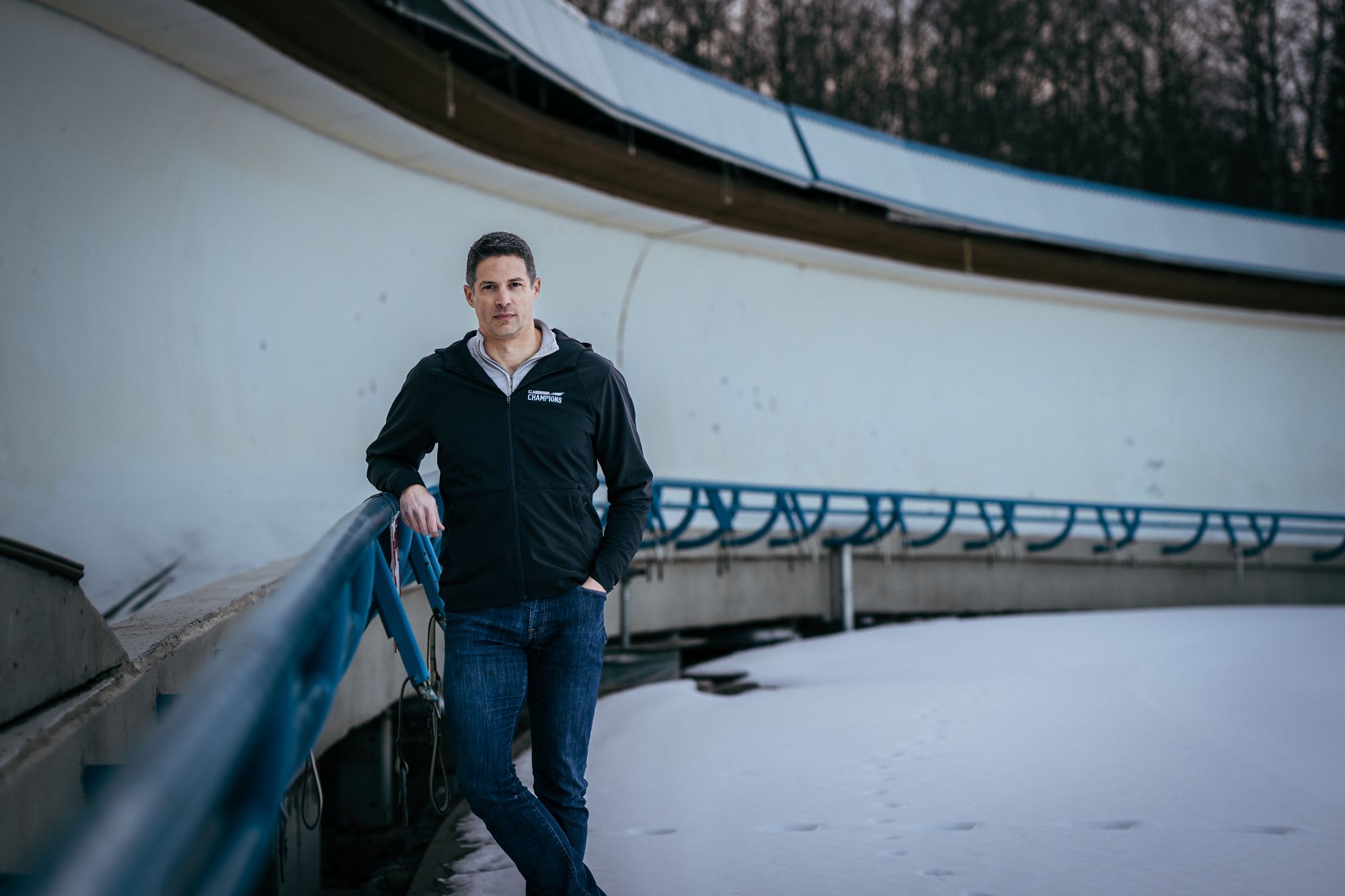
There’s no way to tell how much abuse his brain took during 10 seasons of bobsledding. But the trauma is real. Too real.
In 2017, his fellow gold medalist and driver Steve Holcomb died from a lethal mix of alcohol and prescription drugs. In 2020, Pavle Jovanovic — Mesler’s former roommate, teammate and “personal legend” — died by suicide. In July of 2011, his friend and fellow Olympian Jeret “Speedy” Peterson, a freestyle aerialist and silver medalist in Vancouver, died by suicide. In 2016, Mesler’s teammate and 2002 Olympic silver medalist Bill Schuffenhauer attempted suicide, but was saved by his girlfriend.
Tragically, there are more of these stories. But of the six men that Mesler competed with, two are gone. Another tried.
So when he began to experience signs of severe depression in 2019, naturally he was worried.
“I’m a person who gets up at 5:30, I go down to the gym in the house and I work out. And I would wake up at 5:30, multiple days a week, and I would wind up on the couch in a puddle crying, which is not anything I had ever dealt with, understood, had no idea where it was coming from, why it was happening. It was a completely out-of-body experience. Luckily my wife has a psychology background and she understands these things and she would just come down and love me and lay on the couch with me.”
Mesler has talked about this subject publicly before. But on this day, you can see the vulnerability in his eyes. He’s not ashamed, but you can tell that period in his life changed him.
“He feels — and I think genuinely so — that getting depression was one of the greatest gifts of his life because it helped him really understand some things and have a deep gratitude for the things he has in his life,” Rhiannon says. “It was just the strangest thing for me to see him in that condition because it happened really quickly. The onset of it was really quite fast. And it was really strange for me to see a version of the partner that I knew.
“I remember I had to go to a conference, and I really wasn’t sure what to do. I remember thinking this is a very serious situation, and I’m actually not comfortable leaving you here. But I didn’t want to overreact. So we had a family friend come and stay with him, because I wasn’t sure he was going to be able to parent, and I didn’t fully trust him to be by himself.”
Mesler says it took him “a few weeks” to finally go to the doctor.
“It was my regular family doctor, and I remember going in and saying ‘Something’s not right.’ He had a little self-assessment sheet.”
He handed back the self-assessment, and the doctor looked at it and said, “We’re going to start you on some medication.” The doctor went on to explain that his brain’s orbit was off a bit, and needed to be realigned. It wasn’t exactly that, but it was explained in a way that made sense to Steve.
Shortly after, he began thinking of Adam Wood, a Canadian bobsledder who died by suicide in 2013. He remembers judging him. But, as Mesler cautions, “This was before we were talking about these things.
“For me the stigma was still there. This was 2019. For me I was super fortunate I had one moment when I saw the light rail go by and thought maybe there was a better place for me. And that was probably the bottom of it all.”
I had one moment when I saw the light rail go by and thought maybe there was a better place for me. And that was probably the bottom of it all.
With counseling, some medication and the support of his family, Mesler came out of it within six months. He had a better understanding of his struggle.
“I guess it made me a stronger person. It made me a better leader, made me a better dad, made me a better partner, a better person. It’s taken away so much judgment that I held in life and it's put me in a place where now I see that as my wide-right Scott Norwood. That was depression. That was getting 7th place in 2006 Olympics.”
Weekends in the Mesler household are no time for rest. On Saturday, Steve began his day the same way as Friday: 5:30 a.m. in his home gym. The rest of the day was spent sharing his story with us.
Sunday, we pulled up outside their home around 7 a.m. Five-year-old Brett has ski team practice at a hill near Banff, about 90 minutes away. Inside the home, Ellie May, a golden doodle who recently delivered 12 pups, is wired.
Brett is doing her best to eat breakfast, while Rhiannon packs snacks. Steve has Axel on his hip, and is preparing to load the car. He’s dressed in some Buffalo Bills gear sent to him by the team. The energy is high, but aside from Ellie May, the vibe is cool. Ellie May just wants some love.
The jaunt to the mountains is a father-daughter thing today. Brett is ready to roll, and dons a U.S. Olympic Team jacket from the 2010 Olympics. She looks like a rock star. Canadian-born Rhiannon crinkles her nose a bit watching her Canadian-born daughter in Team USA gear. She randomly works in ‘Go Canada!’ as playful banter with her American husband. Nothing like a little built-in rivalry to keep things fresh.

Rhiannon wasn’t part of Steve’s life as an athlete. The connection had to evolve through meeting “characters in his story.” Some, like Holcomb and Jovanovic, will only live through stories. But in a weird sort of metaphysical reality, Rhiannon did get to witness Steve’s defining moment in sport, even though they wouldn’t meet for another six months.
"During the Vancouver Olympics I was finishing my doctoral candidacy exams, which are a miserable, month-long, you hide in a hole and do this terrible thing by yourself. The last few days, I was almost finished, ready to be done, and it was the end of the Olympics and I only watched two events: I watched the men’s hockey team, where Canada beat America — Go Canada! — and I watched the men’s bobsled final,” she says.
“And I watched it live. I wasn’t there in person, but I was there watching him win. At the time I was kind of pissed off because Canada didn’t win, so there was a certain amount of disappointment that my team didn’t win, but I watched him in that moment. And I’m always kind of grateful that whatever conspired so that I got to be there even though I wasn’t really there.”
As Steve and Brett head out the door, saying goodbye to family and the visitors who have invaded their space the past couple of days, it’s hard not to wonder if we’re watching a next-gen Olympian loaded into the family Subaru by a last-gen Olympian.
Either way, it’s a pretty cool moment. One of many that connect this family’s past with its present. And a wide-open future.
Steve Mesler is more than meets the eye. Check out his segment in our 2023 television show.